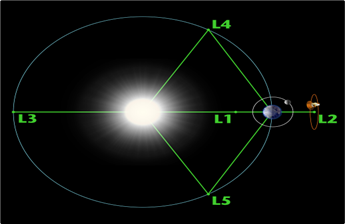Indian Institute of Astrophysics (IIA) handed over to ISRO, the Visible Line Emission Coronagraph (VELC), the primary payload on board Aditya-L1, which is India’s first dedicated scientific mission to study the Sun, to be launched by June or July. The handing over ceremony was held in the presence of the ISRO Chairman S Somanath at the Centre for Research and Education in Science and Technology (CREST) campus of IIA. IIA said it has successfully finished assembling, testing and calibrating the VELC, which is the largest and one of the most technically challenging of the seven payloads/telescopes that will fly on Aditya-L1, at its CREST campus.
About The Payloads In Aditya-L1:
In total Aditya-L1 has seven payloads, of which the primary payload – the VELC, is designed and fabricated by the Indian Institute of Astrophysics (IIA, Bengaluru). The other six payloads are being developed by the ISRO and other scientific institutions. Understanding the effect of the Sun on the Earth and its surroundings has become very important now and Aditya-L1 aims to shed light on this topic. The payload will be taken to the R. Rao Satellite Centre (Bengaluru), where it will be integrated with the Aditya-L1 satellite and will undergo further testing, evaluation and finally launched using the PSLV.
About The Visible Line Emission Coronagraph (VELC) Payload:
- The VELC payload will observe the corona continuously and the data provided by it is expected to answer many outstanding problems in the field of solar astronomy.
- No other solar coronagraph in space has the ability to image the solar corona as close to the solar disk as VELC can (can image it as close as 1.05 times the solar radius).
- It can also do imaging, spectroscopy, and polarimetry at the same time, and can take observations at a very high resolution.
What is the Aditya-L1 Mission:
- Aditya (in Sanskrit means Sun) is a planned coronagraphy spacecraft to study solar atmosphere (solar corona – outermost part).
- It is currently being designed and developed by ISRO and various other Indian research institutes.
- First dedicated Indian mission to observe the Sun, it is planned to be launched in June-July 2023 aboard a PSLV-XL launch vehicle. It was conceptualised in 2008 and was initially envisaged as a small 400 kg satellite.
- The mission’s objectives have subsequently been broadened and it is now intended to be a comprehensive observatory of the sun and space environment.
- It will be placed in an orbit around the Lagrange (L1) point (L1 is about 1.5 million kms from Earth) between Earth and the sun (so renamed – “Aditya-L1“).
What are Lagrange Points:
- Lagrange points are positions in space where objects sent tend to stay there, as the gravitational pull of two large masses precisely equals the centripetal force required for a small object to move with them.
- These points in space can be used by spacecraft to reduce fuel consumption needed to remain in position.
- The first Lagrangian point of the Sun-Earth system, L1 orbit, allows Aditya-L1 to look at the sun continuously.










0 comments:
Post a Comment